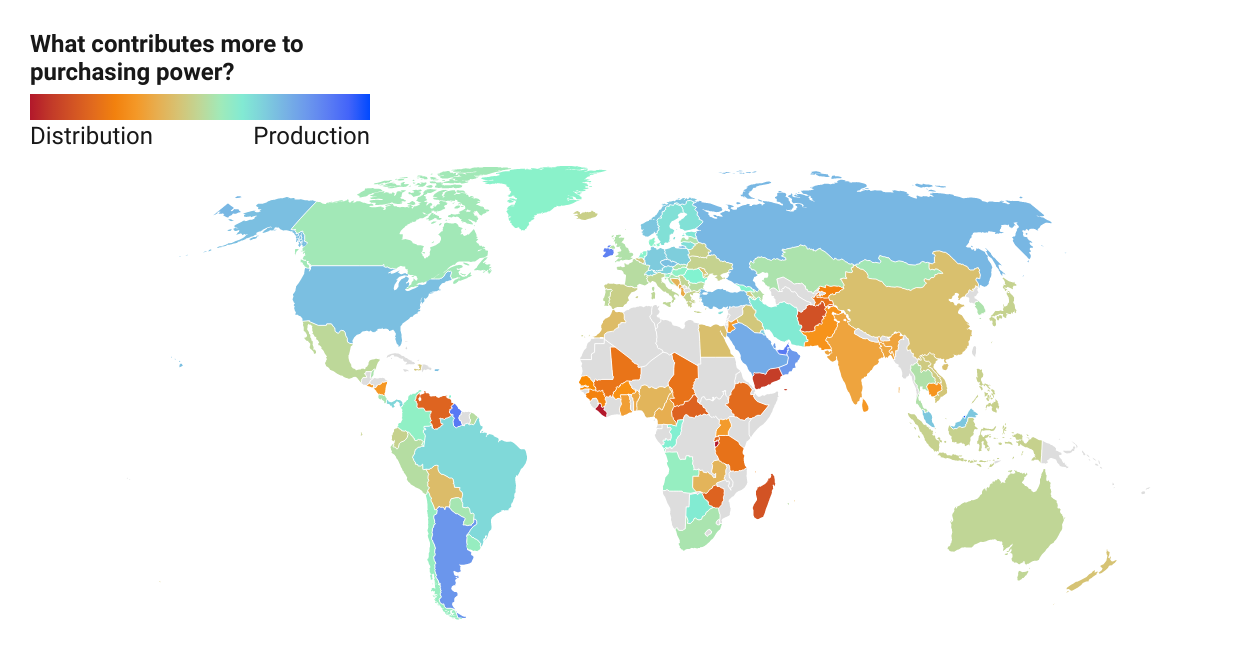Basically, the assumption is that PPP-adjusted GDP per capita (B) is a reliable measure of the economic activity in a country, while its ability to satisfy the needs of its population is better quantified by the PPP-adjusted median wealth per adult (D).
Wikipedia provides B, as well as unadjusted GDP per capita (A) and unadjusted median wealth per adult ( C), so it’s a reasonable assumption that D = BC/A. Since B represents production, C/A is a coefficient indicating how well this production translates to better quality of life.
So, my question is, for an arbitrary D, how much do each of both factors contribute to it? We need to find x so (Bx)(Cx/A) = BCx²/A = 1, so, since 1 = D/D = BC/AD, we find that x = 1/sqrt(D).
Then the normalized production factor is Bx = B/sqrt(D) = B/sqrt(BC/A) = sqrt(AB/C). Since this factor follows a logarithmic distribution, is only makes sense to take the logarithm, for p = log10(sqrt(AB/C)) = 2log10(AB/C). I just omitted the constant factor for simplicity.
It’s far from perfect, as it tends to put together countries with lower GDP per capita and countries with fairer distribution, since both rely less on a high production.

